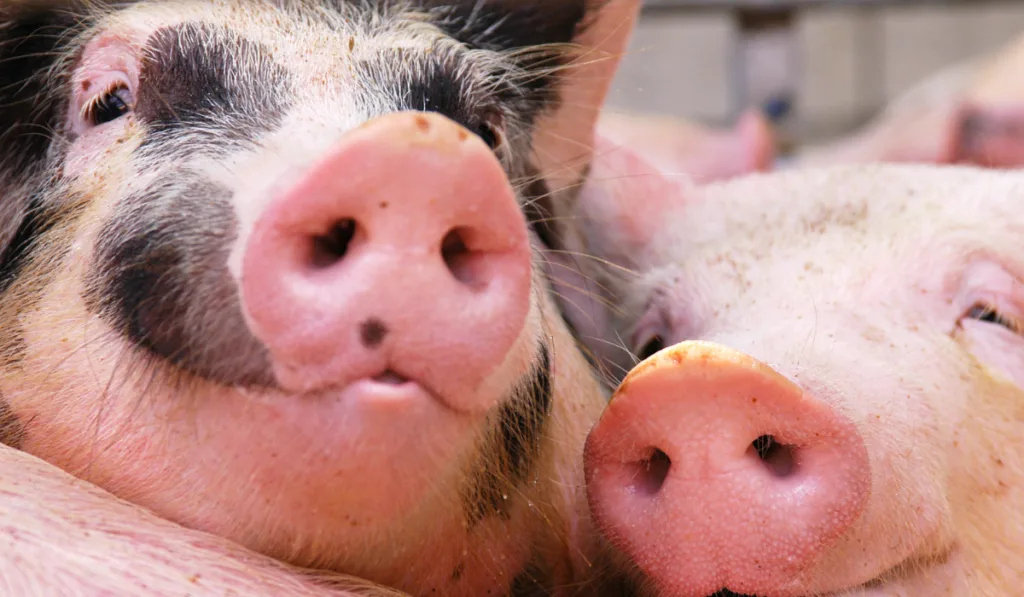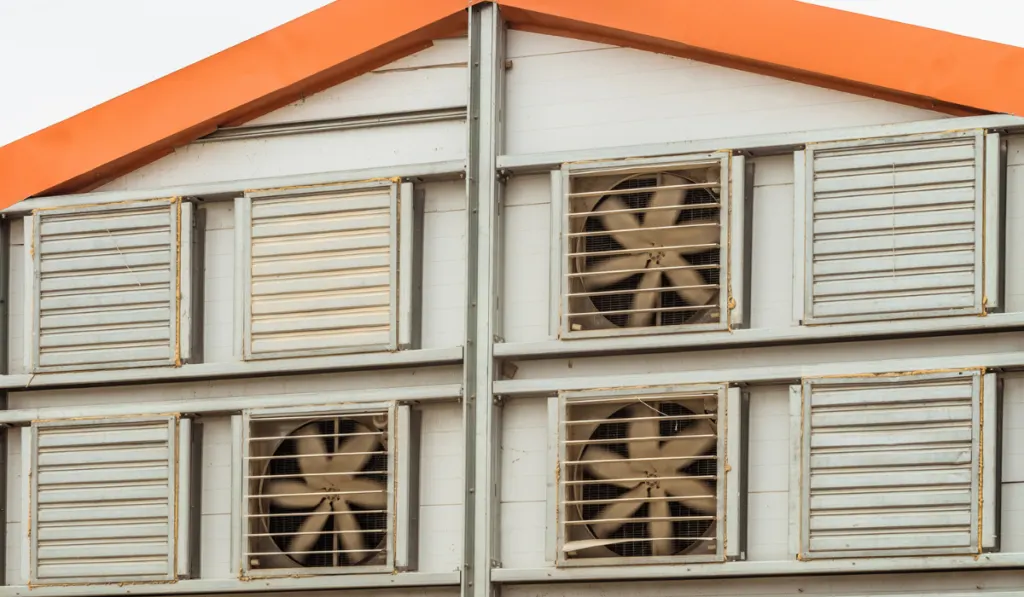Contrary to what most people think, human beings are not the only species with sweat glands. Most animals also have sweat glands that partly help them regulate their body temperature.
Unfortunately, other animals like pigs do not have functional sweat glands, which puts them at a higher risk of heat stress, stroke, and stress, especially during the summer.
Here are pig cooling tips that every owner should keep in mind to avoid poor production due to heat stress-related issues.
Table of Contents
Heat Stress Index
Your best chance at keeping your pigs cool in summer is understanding how hot is too hot for your pigs. Luckily, you can effortlessly determine the likelihood of heat stress in your region based on climatic conditions.
For instance, a simultaneous rise in humidity and temperature in a given region increases the possibility of heat stress on grow-finish pigs.
Keep in mind that fully-grown pigs thrive in temperatures between 50°F and 75°F (10°C and 24°C).
Anything past 80°F (27°C), gilts, sows, or pigs in the growing-finishing phase that are over 100lbs (45kg) are at risk of lethal heat stress levels.

Heat Stress Indicators
Now that you understand the basics behind heat stress and why it is important to keep pigs cool in summer, here are some heat stress indicators to look out for. This way, you will be in a better position to mitigate the risks presented to your production. These indicators are:
- Reduced growth rate
- Delayed heat cycles
- Reduced farrowing frequency
- Declined feed uptake
- Reduced pregnancy rate
- Reduced semen quality
- Changes in carcass composition
- High mortality and morbidity rates
- Increased risk of low-grade inflammation
As you can see, the effects of heat stress cut across the board and affect most if not all aspects of pig production. As such, availing enough resources to keep pigs cool in summer is your best chance at reducing the effect of heat stress on your production.

4 Tips to Keep Pigs Cool in Summer
1. Increasing the Water Supply
The greatest threat of heat stress to your pig production is dehydration.
Therefore, increasing the quantity of water you offer your pigs as well as the number of times you offer it is the best way to mitigate the effects of heat stress and keep them cool in summer.
Besides offering your pigs cool drinking water, you can also consider decreasing heat loss through evaporative cooling. For this, you can install waterers like sprinklers or drip lines to wet your pigs at intervals. Keep in mind that evaporative cooling only works when the pigs are allowed to dry.
The same concept applies to outdoor-housed pigs, where you allow them to roll in mud to cool themselves. This allows evaporative cooling while the mud that is left behind offers your pigs a protective layer against the sun.
For individually housed pigs, consider dripping water on their shoulders and neck to encourage evaporative cooling. This, however, has to be accompanied by proper air movement, otherwise, evaporation will not be possible.
Keep in mind that large water droplets are more efficient when it comes to indoor evaporative cooling. This is because, unlike fogging, large water droplets do not interfere with humidity and, therefore, don’t affect the evaporation rate.
2. Investing in Proper Ventilation

Poorly ventilated spaces are your worst enemy when it comes to coping with heat stress in summer. They prevent free air movement in the barn which is crucial in aiding evaporative cooling.
To guarantee that your barns are properly ventilated, consider enlisting the help of fans to expel air out of the barn to encourage airflow. Subsequently, check to ensure that you do not have any blocked airways.
Similarly, consider going for a structure that has at least two open sides to allow natural airflow when providing shade to pigs raised outdoors.
All in all, proper ventilation and water are key to keeping your pigs cool in summer.
3. Customizing Your Pig’s Diet
Pigs reduce their feed intake by up to 50% in reaction to the heat stress usually experienced in summer. This is usually because they try to reduce the amount of heat generated during digestion.
With this in mind, it is vital for producers to customize diets in summer to ensure that your pigs still meet their nutrient requirements even with reduced feeding.
Luckily, creating a nutrient-rich diet for your pigs is easy since you only need to focus on incorporating higher fat content at the rate of 2 to 6% per meal.
After you have customized your pigs’ diet to survive summer, it is important to consider adjusting your regular feeding times to times when the pigs are more likely to feed. This can either be early in the morning or late in the evening when temperatures are cooler.

4. Increasing Barn Floor Space
Whether you raise your pigs inside or are offering shade to pigs raised outdoors, it is advisable to consider increasing the floor space when trying to keep pigs cool in summer.
Doing this ensures that each pig has enough space to enjoy evaporative cooling.
It is especially beneficial to large pigs which are likely to be affected by the summer heat stress the most.
Final Thoughts
Managing pigs on a daily basis can be challenging, not to mention handling them through seasonal changes. Thankfully, this article informs you about the risks summer poses to your animals and offers surefire tips on how to keep pigs cool in summer to ensure your pig production is not affected.
